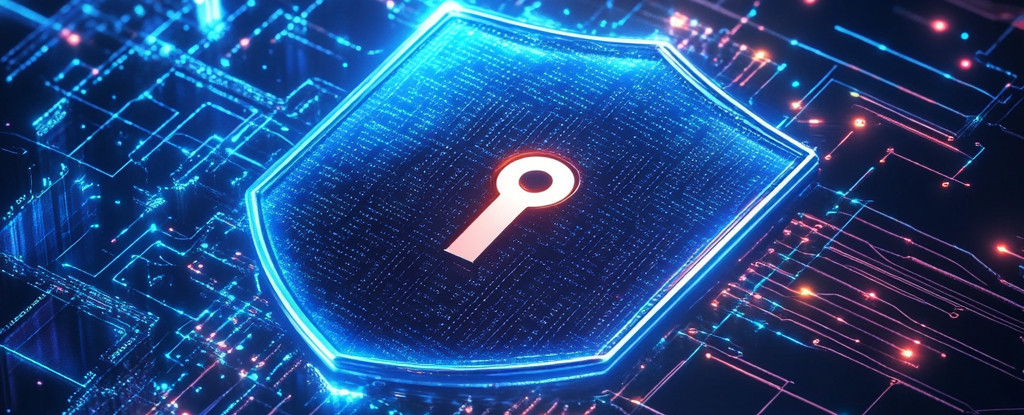Top 5 Benefits of Managed Endpoint Detection and Response for Businesses
by nlqip

In today’s digital landscape, businesses face an increasing number of sophisticated cyber threats. To combat these challenges, many organizations are turning to managed endpoint detection and response (EDR) solutions. But what exactly is managed EDR, and how can it benefit your business?
What is Managed Endpoint Detection and Response?
Before we discuss the benefits, let’s first understand what managed endpoint detection and response entails.
Managed endpoint detection and response is a cybersecurity service that combines advanced technology with human expertise to monitor, detect, and respond to threats on endpoint devices such as computers, laptops, and mobile devices. This service is typically provided by a third-party security vendor who manages the EDR solution on behalf of the client organization.
Key components of a managed EDR service include:
- Continuous monitoring of endpoint activities
- Advanced threat detection using machine learning and behavioral analysis
- Automated and manual incident response capabilities
- Threat hunting to proactively identify hidden risks
- Regular reporting and analysis of security events
Now that we have a basic understanding of managed EDR let’s explore the top five benefits it offers to businesses.
1. Enhanced Threat Detection and Response Capabilities
One of the primary advantages of a managed endpoint detection and response service is its ability to identify and mitigate threats more effectively than traditional security solutions.
Advanced Threat Detection
Managed EDR solutions use sophisticated algorithms and machine-learning techniques to detect both known and unknown threats. This includes:
- Malware and ransomware
- Fileless attacks
- Living-off-the-land techniques
- Insider threats
- Advanced persistent threats (APTs)
By analyzing patterns of behavior across endpoints, managed EDR can identify subtle indicators of compromise that might be missed by traditional antivirus software.
Rapid Incident Response
When a threat is detected, managed EDR services can quickly initiate response actions to contain and mitigate the threat. This may include:
- Isolating infected endpoints from the network
- Terminating malicious processes
- Removing or quarantining suspicious files
- Blocking network connections to malicious IP addresses
The combination of automated responses and human expertise allows for faster and more effective threat mitigation, reducing the potential impact of security incidents.
2. Access to Cybersecurity Expertise
Implementing and managing an EDR solution in-house can be challenging, especially for organizations with limited cybersecurity resources. A managed endpoint detection and response service provides access to a team of security experts who can:
Provide 24/7 Monitoring and Support
Cyber threats don’t follow a 9-to-5 schedule, and neither should your security team. Managed EDR services offer round-the-clock monitoring and support, ensuring that your endpoints are protected at all times.
Offer Specialized Knowledge
Managed EDR providers employ teams of security professionals with diverse skill sets and experience. This gives your organization access to a broader range of expertise than you might be able to cultivate in-house.
Stay Updated on the Latest Threats
Cybersecurity is a rapidly evolving field, with new threats emerging constantly. Managed EDR providers invest in ongoing training and research to stay ahead of the latest attack techniques and trends.
Assist with Compliance Requirements
Many managed EDR services can help organizations meet various regulatory compliance requirements by providing necessary security controls and documentation.
3. Cost-Effectiveness
Implementing and maintaining an in-house EDR solution can be expensive, requiring significant investments in technology, personnel, and training. A managed endpoint detection and response service can offer several cost advantages:
Reduced Capital Expenditure
By opting for a managed service, organizations can avoid the upfront costs associated with purchasing and implementing an EDR solution. Instead, they can leverage the provider’s existing infrastructure and expertise.
Predictable Operating Expenses
Managed EDR services typically operate on a subscription model, allowing businesses to budget for security expenses more effectively with predictable monthly or annual fees.
Scalability
As your business grows, a managed EDR service can easily scale to accommodate new endpoints without requiring significant additional investment in hardware or personnel.
Optimized Resource Allocation
By outsourcing EDR management, your in-house IT team can focus on core business initiatives rather than spending time on complex security operations.
4. Improved Visibility and Threat Intelligence
Managed endpoint detection and response services provide organizations with enhanced visibility into their security posture and access to valuable threat intelligence.
Comprehensive Endpoint Visibility
Managed EDR solutions offer a centralized view of all endpoint activities across your organization. This improved visibility helps in:
- Identifying patterns and trends in security events
- Detecting anomalies that may indicate a potential threat
- Understanding the full scope of security incidents
Actionable Threat Intelligence
Many managed EDR providers integrate threat intelligence feeds into their services, providing organizations with up-to-date information on emerging threats. This allows for:
- More proactive defense strategies
- Faster adaptation to new attack techniques
- Better context for understanding and prioritizing security alerts
Detailed Reporting and Analytics
Managed EDR services typically provide regular reports and analytics on your organization’s security posture. These insights can help:
- Identify areas for improvement in your security strategy
- Demonstrate the value of security investments to stakeholders
- Support compliance reporting requirements
5. Continuous Improvement and Adaptation
The cybersecurity landscape is constantly changing, and organizations need to adapt their defenses accordingly. A managed endpoint detection and response service can help businesses stay ahead of evolving threats through:
Regular Updates and Enhancements
Managed EDR providers continuously update their technologies and processes to address new threats and improve detection and response capabilities.
Customization and Fine-Tuning
Over time, managed EDR services can be tailored to your organization’s specific needs and risk profile, improving the accuracy of threat detection and reducing false positives.
Proactive Threat Hunting
Many managed EDR services include proactive threat hunting, where security experts actively search for hidden threats within your environment. This can help identify and mitigate potential risks before they lead to a security breach.
Lessons Learned and Best Practices
Managed EDR providers work with multiple clients across various industries, allowing them to gather insights and best practices that can be applied to improve your organization’s security posture.
Choosing the Right Managed EDR Service Provider
While the benefits of managed endpoint detection and response are clear, it’s important to select the right provider for your organization’s needs. Consider the following factors when evaluating managed EDR services:
1. Expertise and Experience
Look for providers with a proven track record in delivering managed EDR services and expertise in your industry.
2. Technology Stack
Evaluate the EDR technologies and tools used by the provider to ensure they align with your organization’s needs and existing infrastructure.
3. Customization Options
Choose a provider that offers flexible services that can be tailored to your specific security requirements and risk profile.
4. Integration Capabilities
Ensure the managed EDR service can integrate seamlessly with your existing security tools and processes.
5. Reporting and Communication
Look for providers that offer clear, regular reporting and maintain open lines of communication with your internal teams.
6. Service Level Agreements (SLAs)
Review the provider’s SLAs carefully to understand their commitments regarding response times, uptime, and other key metrics.
7. Compliance Support
If your organization operates in a regulated industry, choose a provider that can help you meet relevant compliance requirements.
Conclusion
As cyber threats continue to evolve in sophistication and frequency, businesses need robust security solutions to protect their digital assets. Managed endpoint detection and response services offer a powerful combination of advanced technology and human expertise to enhance an organization’s security posture.
By leveraging these advantages, organizations can significantly improve their ability to detect, respond to, and mitigate cyber threats, ultimately reducing the risk of successful attacks and minimizing the potential impact of security incidents.
Source link
lol
In today’s digital landscape, businesses face an increasing number of sophisticated cyber threats. To combat these challenges, many organizations are turning to managed endpoint detection and response (EDR) solutions. But what exactly is managed EDR, and how can it benefit your business? What is Managed Endpoint Detection and Response? Before we discuss the benefits,…
Recent Posts
- Tenable Announces the Passing of Chairman and CEO Amit Yoran
- Opinion: Why Nvidia, MediaTek May Enter The PC CPU Market Soon
- Microsoft VP Of Silicon Engineering Jumps To Google Cloud To Head Chip Technology And Manufacturing
- 10 Cloud Startup Companies To Watch In 2025
- Cybersecurity Snapshot: After Telecom Hacks, CISA Offers Security Tips for Cell Phone Users, While Banks Seek Clearer AI Regulations

